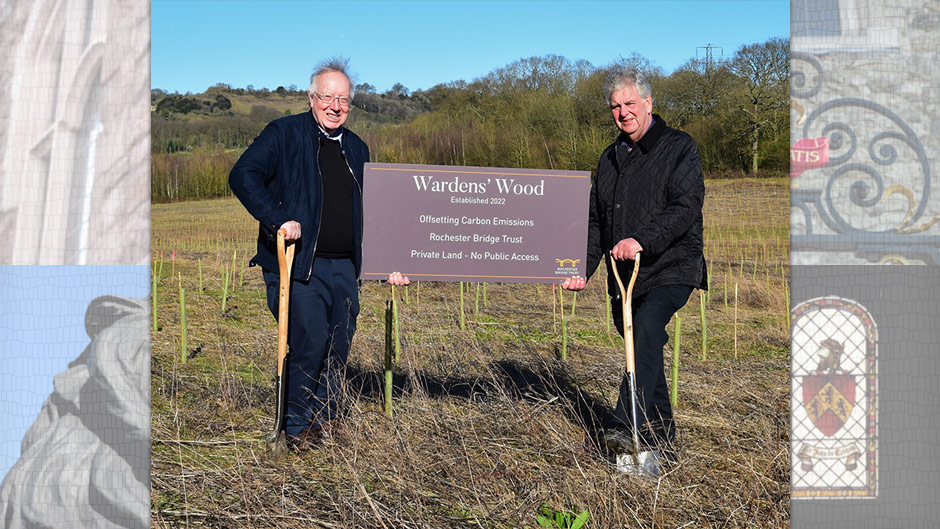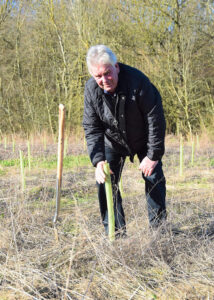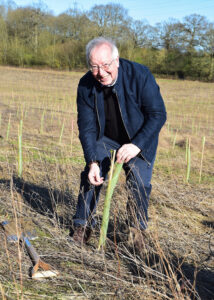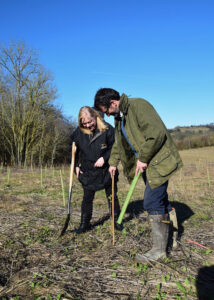Eight thousand trees are being planted in a project to offset the carbon from the Rochester Bridge Refurbishment Project and other activities of the Trust.
The trees will create a new woodland on a parcel of land to the south of the Channel Tunnel Railway at Detling, and within the North Downs Area of Outstanding Natural Beauty (AONB).
The site, which has been owned by the Rochester Bridge Trust since 1995, was chosen because it is enclosed by existing woodland and will help to create a larger wooded area for the benefit of flora and fauna.
Tim Cathcart, Chief Estates Officer at the Trust, explained: “The site has no public access and is set within an AONB, which makes it ideal for creation of a long-term woodland with the specific purpose of enhancing the environment and capturing carbon.
“It is also important to us to locate our first new woodland on a site within Kent and within range of the bridge.”
As part of the site selection process, land with minimal potential for efficient food production was identified and various areas owned by the Trust were reviewed in terms of historic land use, archaeology, water courses and more, and a formal screening request was made to the Forestry Commission to approve the planting.
The woodland, which is to be planted in two phases, will eventually extend to 26 acres. Phase one – which includes the trees to sequester the carbon generated by the bridge refurbishment – covers 13 acres, of which eight are being planted with trees and the remainder left as conservation grassland which will become established with wildflowers over time to the benefit of insects and wild animals. Phase two will be introduced at a later date.
The 8,000 trees that make up phase one have been selected because they are native species that will sit comfortably within their location. They have also been chosen to maximise carbon capture, with speed of growth, density of timber, size of branches, and more, taken into consideration.
The young trees have been planted densely to establish the new woodland quickly and to store more carbon in the future. To eliminate use of plastic in the new environment, the trees are protected from rabbits using tree shelters made from corn starch.
The trees are: alder, aspen, birch (downy/silver), bird cherry, black poplar, common walnut, field maple, hazel, hornbeam, large-leaved lime, sweet chestnut, wild cherry (gean), and wild service.
Mike Chapman, Senior Forest Manager at Savills, who designed and manged the project on behalf of the Trust, said: “It has been a privilege to help deliver a well thought out legacy project to enhance the landscape and the environment.”
Access to the woodland – which is situated away from any roads – is limited for management purposes only, to ensure the area is left to grow with minimal disturbance from people.
Sue Threader, Bridge Clerk at the Trust, added: “This woodland is being created so that it can become an ancient woodland of the future.”
Pictured from left, planting:





